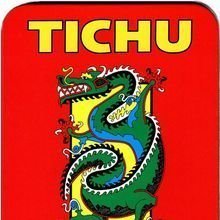
Birthday Factory: Kids games
Games and Education
App
Have you ever wondered where birthday parties are created? Who prepares the cake, who makes the...

Candy Crush Soda Saga
Games
App
Start playing Candy Crush Soda Saga today - already enjoyed by millions of players around the world!...

Agent A: A puzzle in disguise
Games and Entertainment
App
Agent A, your new mission is in from headquarters. An enemy spy known as Ruby La Rouge has been...

Lumino City
Games and Entertainment
App
** BAFTA - Winner 2015 ** Lumino City is a wonderful puzzle adventure crafted entirely by hand out...

MMA Crossfit School
Sports and Health & Fitness
App
Are you ready to become better?! Are you ready to enhance your body, spirit and consciousness?! ...

Celtic Tribes - MMO
Games and Entertainment
App
Celtic Tribes - Real-time strategy for true chiefs Peaceful settlers as well as the battle hungry...

Shadow Puppet
Photo & Video and Productivity
App
Create custom videos that are easy to share! Combine photos and video clips with your voice and...

Tichu
Tabletop Game
Even though over 642 million Chinese play Tichu nearly every day, the game is very complicated for...
BoardGames CardGames TricktakingGames
Kristy H (1252 KP) rated Heard It in a Love Song in Books
Oct 28, 2021
"And she wasn't lonely, not really. Layla had been lonely for years while she was married, and she'd take being alone over lonely any day."
I didn't dislike this book, but it wasn't the sweeping romance I was hoping for. This one redefined slow burner, as Josh and Layla sloowly made their way toward one another. Most of this is the format--told from both Layla and Josh's point of view, each chapter breaks off to delve into how that particular's character's marriage fell apart. So we may get a few moments of them in the present and then--boom--it quickly flashes back to Josh and Kimmy in high school or Layla and her ex-husband, Liam, meeting when Layla is singing in her band. Each piece is just a snippet, slowly parsed out per chapter and building up to the end of the marriage, so both the past and the present is a build-up. I admire the style, but wow... everything takes time. A lot of time! It made the story feel quite plodding at times.
And, I just couldn't quite find the spark between Layla and Josh. Individually, they were great people, and I liked and rooted for their characters to move on from their past relationships. Together, I just didn't feel that they had "it"--that special something that really makes you want a particular couple to succeed. I certainly desired for each to find themselves again, but I didn't necessarily need it to be with one another. I did, however, have great fondness for Norton, the older dog Josh adopts, and whom Layla often dog-sits. So there you go.
This isn't a bad book, and I know lots of people who enjoyed it. It received a 3-star rating from me, which is *not* a poor rating. It just wasn't what I was hoping for, and I had wanted more passion. But if you enjoy a character-driven read, especially one that really delves into the characters' pasts, you'll find a lot to love here. (Also the cover is simply gorgeous.)

